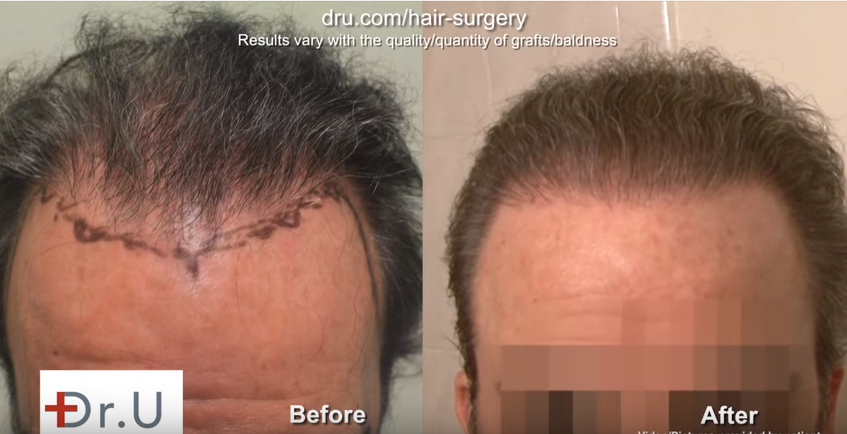Genetically DHT Resistant Grafts
Pattern baldness is caused by genes which determine the structure of certain protein receptors on the hair follicle. Some follicles on the head are more vulnerable to the detrimental effects of DHT compared to others. This is why typical males with androgenic alopecia maintain a stable wreath of hair around the sides and back of their scalp. These follicles are not affected by DHT in the same way as hair on the rest of their head.
Determining the stable zone tends to be easier for older males who have a low rate of shedding. However, it is often times more of a challenge for younger men in their twenties who are rapidly losing a lot of hair.
There are various ways to determine which regions of hair are more suitable as donors than others. The most general way for doctors to gauge this is by assessing donor density. In other words, regions with very low density where there is noticeable thinning would make poor choices as sources of grafts to use for a hair transplantation procedure.
Therefore, inserting hair follicles which are undergoing miniaturization will result in either no growth or temporary growth
Overall, determining the deal donor sites to use is a necessary skill for surgeons who perform restoration procedures. A good doctor will evaluate the pattern and rate of hair loss and disclose whether or not additional procedures would be needed if the patient chose to undergo surgery right away.
The Issue of Shock Loss in A Hair Transplantation
The process of transferring hair follicles from one region to another can be very traumatic for hair follicles. Therefore, they may undergo a phenomenon known as shock loss. Shock loss can also occur from the creation of recipient slits, which is invasive and can affect existing follicles surrounding these points of insertion.
Body Hair Follicles and DHT
If an individual does not have enough grafts on the head to meet their hair transplant objectives , it may be necessary to use follicles from other areas. Common sources include:
- Beard regions on the face and neck
- Chest
- Abdomen
- Back
- Arms and legs
Examples of cases which may benefit from this approach includes:
(1) severe baldness (Norwoods 6-7)
(2) extreme forms of hair repair, particularly after the patient had undergone multiple procedures
(3) thinning forms of androgenic alopecia where a stable permanent zone of high density hairs cannot be relied upon as a source of donor follicles.
One of the interesting characteristics of body hair is that it actually thrives in the presence of DHT. This is seen in adolescence when individuals are experiencing surges of testosterone in their blood streams. These high levels of hormones are eventually converted into DHT within the liver. Despite these high levels of DHT, body hair grows quite prolifically.
While the use of these grafts is a secondary recourse for hair transplantation, an added benefit includes resilience to DHT.

